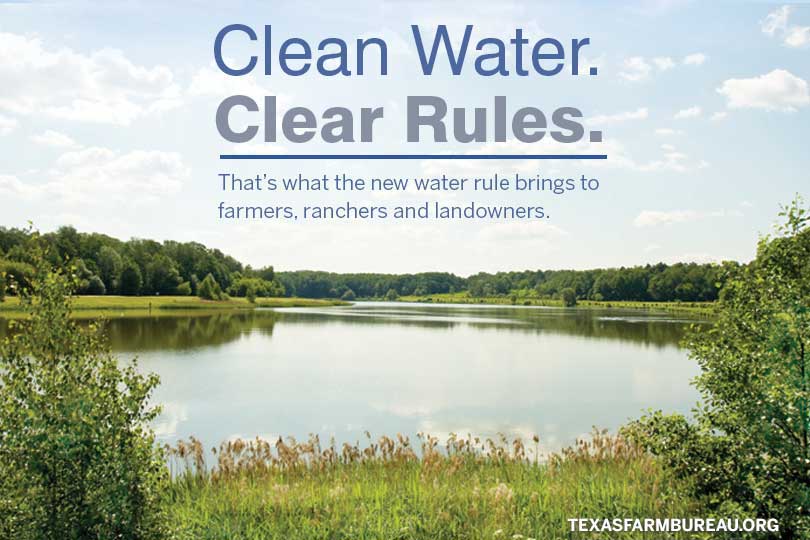By Jessica Domel
Multimedia Reporter
Clean water. Clear rules. In an effort to make it easier for landowners to determine who has jurisdiction over the water on their property, the Environmental Protection Agency (EPA) Tuesday unveiled its proposed replacement for the embattled Waters of the U.S. (WOTUS) rule.
“The agency’s proposal will replace the 2015 definition with a clearer and easier-to-understand definition that will result in significant cost savings, protect the nation’s navigable waterways and reduce barriers to important economic and environmental projects,” Andrew Wheeler, acting EPA administrator, told the Texas Farm Bureau (TFB) Radio Network.
The agency’s proposal is the second step in a two-step process to review and revise the definition of a Water of the U.S.
The process was triggered by an executive order issued by President Donald Trump shortly after taking office.
“The 2015 WOTUS rule created too much uncertainty for American farmers and ranchers. It made it difficult for landowners to discern what practices were and were not allowed and which areas fell under state or federal jurisdiction. The fear of thousands of dollars in fines for simply working your land was too great,” TFB President Russell Boening, who was at the signing of the proposed rule in Washington, D.C. said. “We’re pleased EPA is moving forward to provide the much needed clarity while also protecting our precious natural resources.”
Under the 2015 rule, landowners would need to apply for a federal permit to plant, move dirt and other practices on land containing low-lying areas or waterways.
“They claimed it was in the interest of water quality, but was really about power—power in the hands of the federal government over landowners,” Wheeler said.
Wheeler told reporters it’s a costly and time-consuming process that put local land-use decisions in the hands of bureaucrats.
“Our proposal will replace the 2015 definition with one that restores the rule of law and the primary role of states in managing their land and water resources. It will end years of uncertainty over where federal jurisdiction begins and ends,” Wheeler said.
The proposed rule defines what lands are federally protected and what areas fall under state jurisdiction while adhering to EPA’s statutory limits of authority in line with the late Justice Antonin Scalia’s Rapanos opinion.
“It will help a landowner understand whether a project on his or her property will require a federal permit or not without spending thousands of dollars on engineering and legal professionals,” Wheeler said. “Finally, it would ensure that Americans’ water protections among the best in the world remains strong, while giving states and tribes the certainty to manage their waters in ways that best protect their natural resource and local economy.”
The new rule includes six categories of waters that should be considered a Water of the U.S. under the Clean Water Act.
They are: traditional navigable waters, tributaries to navigable waters, certain ditches like those used for navigation, select lakes and ponds, impoundments and wetlands adjacent to Waters of the U.S.
“We provide additional clarity by creating an exclusion that says effectively, if the water is not in one of the six categories of waters that are in, it’s out,” David Ross, assistant EPA administrator for Water, told the TFB Radio Network. “There’s long been some confusion between how the inclusions and the exclusions work, so we provided some additional clarity.”
The proposal also details waters that are not Waters of the U.S.
They include: features that only contain water during or response to a rainfall; groundwater, which is never supposed to be included; most ditches, including most roadside or farm ditches; prior converted cropland would be out; as would storm water control features; and wastewater and waste treatment systems.
The proposed rule is available on EPA.gov.
A notice of the proposed rule will be published in the Federal Register,

